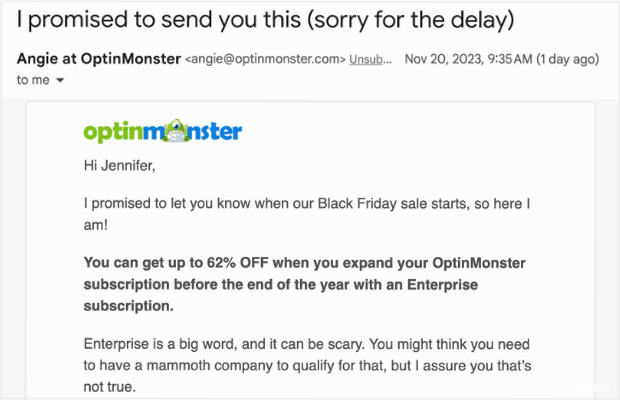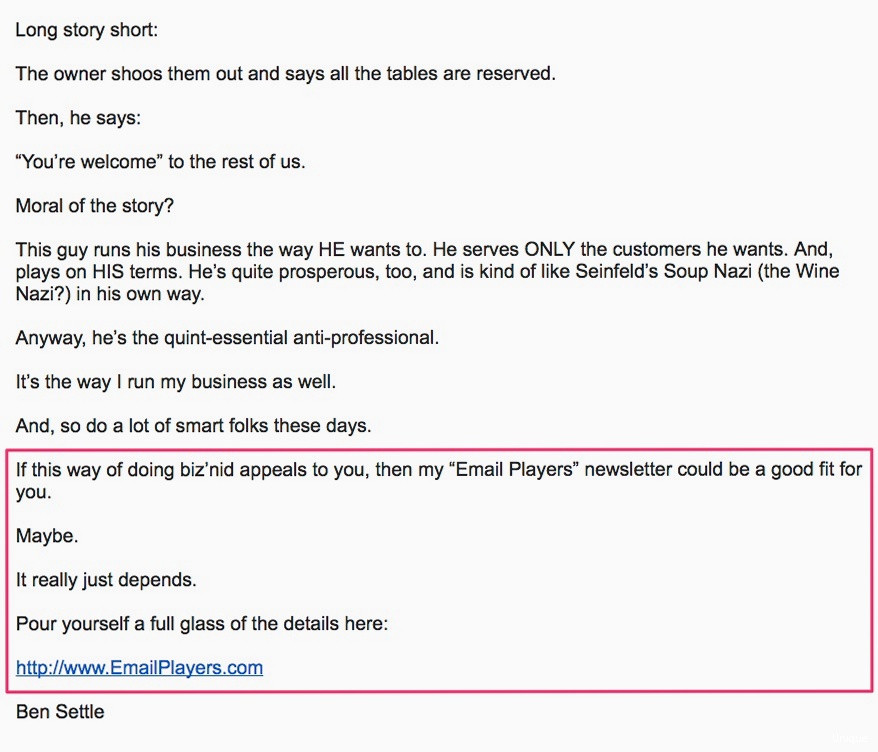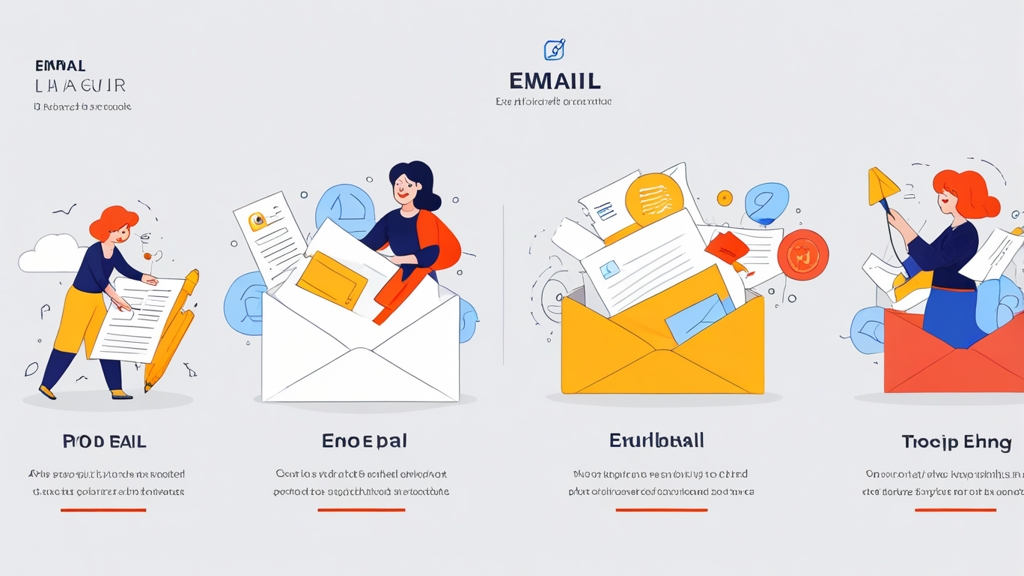How to Write Email Copy That Converts
Crafting compelling email copy is essential for driving conversions, nurturing leads, and building strong customer relationships. A well-written email can transform a simple message into a powerful tool that generates engagement and achieves your business goals. In this article, we’ll explore proven techniques and strategies for creating email copy that resonates with your audience and compels them to take action.
Table of Contents
- Understanding Your Audience
- Crafting Compelling Subject Lines
- Writing Engaging Body Copy
- Creating Clear Calls-to-Action
- Testing and Optimizing Your Email Copy
Understanding Your Audience

Segmenting Your Email List
One of the most effective ways to personalize your email copy is through segmentation. Dividing your email list into smaller, more targeted groups based on shared characteristics allows you to send highly relevant messages that speak directly to their interests. Common segmentation criteria include:
- Demographics (age, gender, location)
- Purchase history
- Website behavior (pages visited, products viewed)
- Engagement level (email opens, clicks)
- Industry (for B2B marketing)
For example, you might create a segment of customers who have purchased a specific product in the past. You could then send them emails promoting related products or offering exclusive discounts. Similarly, you could segment your list based on website behavior, targeting users who have abandoned their shopping carts with personalized reminders and incentives to complete their purchase.
Example: A SaaS company segments its users based on their usage of different features within the platform. Users who haven’t used a specific feature receive an email showcasing the benefits of that feature and providing a tutorial on how to use it. This targeted approach increases feature adoption and improves overall user engagement.
Creating Customer Personas
Creating customer personas is another powerful technique for understanding your audience. A customer persona is a fictional representation of your ideal customer, based on research and data about your existing customers. It typically includes details such as their:
- Age and demographics
- Job title and responsibilities
- Goals and challenges
- Values and motivations
- Pain points
- Preferred communication channels
By developing detailed customer personas, you can gain a deeper understanding of their needs and motivations, which will inform your email copy. You can then tailor your messaging to address their specific pain points and highlight the benefits that are most relevant to them.
Example: A marketing agency creates a customer persona called “Sarah, the Startup Founder.” Sarah is a 30-year-old entrepreneur who is struggling to grow her business on a limited budget. She is looking for cost-effective marketing solutions that will help her reach a wider audience and generate more leads. The agency then crafts email copy that highlights the affordability and effectiveness of their services, specifically addressing Sarah’s pain points and goals.
Analyzing Customer Data
Leveraging customer data is essential for creating personalized email experiences. Analyze your website analytics, email marketing metrics, and customer relationship management (CRM) data to gain insights into your audience’s behavior and preferences. Pay attention to:
- Email open rates and click-through rates
- Website pages visited
- Products purchased
- Customer demographics
- Survey responses
- Social media engagement
Use this data to identify trends and patterns that can inform your email copy. For example, if you notice that a particular segment of your audience is highly engaged with emails that feature video content, you can incorporate more videos into your email campaigns targeting that segment.
Example: An e-commerce store analyzes its email marketing data and discovers that customers who receive personalized product recommendations based on their past purchases have a 20% higher conversion rate. They then implement a dynamic content strategy that automatically inserts personalized product recommendations into their email campaigns, resulting in a significant increase in sales.
Expert Tip: Don’t be afraid to ask your audience directly about their preferences. Use surveys and polls to gather valuable feedback that can inform your email marketing strategy. Offering an incentive, such as a discount or a free gift, can encourage more people to participate.
Crafting Compelling Subject Lines

Using Action Words and Power Words
Action words and power words can inject energy and excitement into your subject lines, making them more compelling and attention-grabbing. Action words encourage readers to take a specific action, while power words evoke emotion and create a sense of urgency or importance. Examples include:
- Action words: Discover, Learn, Get, Try, Join, Shop, Save, Download
- Power words: Exclusive, Limited, Free, New, Secret, Proven, Amazing, Urgent
Example: Instead of “New Product Announcement,” try “Discover the Secret to Increased Productivity” or “Get Exclusive Access to Our Limited-Time Offer.”
Creating a Sense of Urgency and Scarcity
Creating a sense of urgency and scarcity can motivate readers to open your emails immediately. Emphasize that the offer is limited-time or that there are only a few items remaining. This can trigger a fear of missing out (FOMO) and encourage readers to take action.
Example: “Last Chance: 50% Off Ends Tonight!” or “Only 10 Spots Left: Join Our Exclusive Webinar Now!”
Personalizing Subject Lines
Personalizing subject lines with the recipient’s name, location, or other relevant information can significantly increase open rates. Personalization shows that you know your audience and that the email is relevant to their individual needs and interests.
Example: “John, Check Out These Exclusive Deals Just for You!” or “Welcome to [City Name]: Here Are Some Local Events You Might Enjoy.”
Using Questions and Curiosity
Asking a question or arousing curiosity can pique your reader’s interest and make them want to open your email to find out the answer. However, make sure that the question is relevant to your audience and that the answer is valuable.
Example: “Are You Making These Common Email Marketing Mistakes?” or “The Secret to Doubling Your Website Traffic Revealed.”
Keeping Subject Lines Short and Sweet
With the increasing use of mobile devices, it’s crucial to keep your subject lines short and sweet. Mobile devices often truncate long subject lines, so it’s important to convey your message in as few words as possible. Aim for subject lines that are no more than 50 characters in length.
Example: Instead of “Don’t Miss Out on Our Exclusive Summer Sale: Up to 70% Off!” try “Summer Sale: Up to 70% Off!”
Example: An online course platform used the following subject lines for an A/B test:
| Subject Line | Open Rate |
|---|---|
| Learn New Skills Today! | 22% |
| Unlock Your Potential with Our Courses | 18% |
The shorter and more direct subject line, “Learn New Skills Today!”, performed better in terms of open rates.
Writing Engaging Body Copy
The body copy of your email is where you have the opportunity to connect with your audience on a deeper level, build trust, and persuade them to take action. Writing engaging body copy requires a clear understanding of your audience’s needs and a compelling storytelling approach. This section will explore strategies for crafting email body copy that captivates your readers and motivates them to engage with your message.
Focusing on Benefits, Not Features
When writing email copy, it’s essential to focus on the benefits that your product or service provides, rather than simply listing its features. Explain how your product or service will solve your audience’s problems, improve their lives, or help them achieve their goals. People are more likely to be interested in what your product or service can do for them than in its technical specifications.
Example: Instead of saying “Our software has advanced AI algorithms,” try “Our software uses advanced AI algorithms to automate your marketing tasks and save you valuable time.”
Using a Conversational Tone
Write your email copy in a conversational tone, as if you were talking to a friend or colleague. Avoid using jargon or overly formal language. A conversational tone makes your email more approachable and helps to build rapport with your audience.
Example: Instead of “We are pleased to announce the launch of our new product,” try “We’re excited to share our new product with you!”
Telling a Story
Stories are a powerful way to connect with your audience on an emotional level. Use storytelling to illustrate the benefits of your product or service and to create a more memorable and engaging experience. Share customer success stories, personal anecdotes, or even fictional scenarios that resonate with your audience’s values and aspirations.
Example: “Meet Sarah, a busy mom who was struggling to balance work and family. After using our meal planning service, she now has more time to spend with her kids and feels less stressed about meal preparation.”
Keeping It Concise and Easy to Read
People are busy, and they don’t have time to read long, complicated emails. Keep your email copy concise and easy to read by using short paragraphs, bullet points, and headings. Use white space to break up the text and make it more visually appealing.
- Use short, clear sentences.
- Break up long paragraphs into smaller chunks.
- Use bullet points to highlight key information.
- Use headings and subheadings to organize your content.
Example: Instead of writing a long, dense paragraph about the features of your product, break it down into a bulleted list with clear headings.
Adding Visuals
Adding visuals, such as images and videos, can significantly enhance the engagement and appeal of your email copy. Visuals can help to break up the text, illustrate your points, and create a more memorable experience for your readers. Choose visuals that are relevant to your message and that resonate with your audience’s aesthetic preferences.
Example: If you’re promoting a new product, include a high-quality image or video of the product in action.
Quote from Neil Patel: “Email marketing is still the most effective way to nurture leads and convert them into customers. The key is to provide value and build relationships with your subscribers.”
Creating Clear Calls-to-Action
A clear and compelling call-to-action (CTA) is the cornerstone of any successful email marketing campaign. It’s the instruction that guides your readers toward the desired action, whether it’s making a purchase, signing up for a webinar, or downloading a free resource. This section will explore strategies for crafting CTAs that are irresistible and drive conversions.
Using Action-Oriented Language
Your CTAs should use strong, action-oriented language that clearly communicates what you want your readers to do. Use verbs that are specific, concise, and motivating. Examples include:
- Shop Now
- Sign Up
- Download Now
- Learn More
- Get Started
- Claim Your Offer
Example: Instead of “Click Here,” try “Download Your Free Ebook Now!”
Making CTAs Visually Prominent
Your CTAs should be visually prominent and easy to find within your email. Use contrasting colors, large fonts, and clear button designs to make them stand out. Position your CTAs strategically within your email, such as at the end of a paragraph or after a compelling image.
- Use a button with a contrasting color to the background.
- Use a large, easy-to-read font.
- Make sure the button is appropriately sized for mobile devices.
Example: Use a bright orange button that says “Shop Now” against a white background.
Creating a Sense of Urgency and Scarcity
As with subject lines, creating a sense of urgency and scarcity can also be effective in CTAs. Emphasize that the offer is limited-time or that there are only a few items remaining. This can motivate readers to take action immediately.
Example: “Claim Your Discount Before It Expires!” or “Limited Spots Available: Register Now!”
Personalizing CTAs
Personalizing CTAs with the recipient’s name or other relevant information can increase their effectiveness. Personalization shows that you know your audience and that the offer is relevant to their individual needs and interests.
Example: “John, Claim Your Exclusive Discount Today!”
Testing and Optimizing CTAs
The best way to determine what works best for your audience is to test different CTAs. Experiment with different wording, colors, sizes, and placements to see which variations generate the highest click-through rates. Use A/B testing to compare different versions of your CTAs and track the results.
Example: Run an A/B test to compare a blue button with the text “Learn More” to a green button with the text “Discover More.” Track the click-through rates for each version and use the results to optimize your CTAs.
Example: A furniture retailer changed their CTA button text from “View Collection” to “Shop the Look” and saw a 15% increase in click-through rates.
Testing and Optimizing Your Email Copy
Email marketing is not a “set it and forget it” activity. Continuous testing and optimization are crucial for maximizing the effectiveness of your email campaigns. By experimenting with different elements of your email copy, such as subject lines, body copy, and CTAs, you can identify what resonates best with your audience and drive significant improvements in your results. This section will explore the key principles of A/B testing and provide practical tips for optimizing your email copy for maximum performance.
A/B Testing Basics
A/B testing, also known as split testing, involves creating two or more variations of an email and sending them to a portion of your audience. By comparing the performance of each variation, you can determine which one is most effective in terms of open rates, click-through rates, and conversions. A/B testing allows you to make data-driven decisions about your email copy and continuously improve your results.
Example: You might create two versions of an email with different subject lines and send them to 50% of your audience each. After a certain period of time, you can analyze the results and determine which subject line generated the higher open rate. You can then send the winning version to the remaining 50% of your audience.
Elements to Test
There are numerous elements of your email copy that you can test, including:
- Subject lines
- Headlines
- Body copy
- CTAs
- Images
- Layout and design
- Sender name
- Send time
It’s important to test only one element at a time to ensure that you can accurately attribute the results to that specific change. For example, if you test both the subject line and the CTA at the same time, you won’t know which change had the greater impact on your results.
Setting Up and Running A/B Tests
Most email marketing platforms offer built-in A/B testing tools that make it easy to set up and run tests. The process typically involves:
- Creating two or more variations of your email.
- Defining the audience segment for the test.
- Choosing the metric you want to track (e.g., open rate, click-through rate, conversion rate).
- Setting the duration of the test.
- Analyzing the results and determining the winning variation.
Make sure to use a statistically significant sample size to ensure that your results are accurate. A statistically significant sample size is large enough to accurately represent your entire audience.
Analyzing and Interpreting Results
After running your A/B test, it’s important to carefully analyze the results and draw meaningful conclusions. Look at the metrics you tracked, such as open rates, click-through rates, and conversion rates, and compare the performance of each variation. Determine which variation performed significantly better and identify the factors that contributed to its success.
Example: You run an A/B test on two different CTAs and find that the variation with the text “Download Now” generated a 20% higher click-through rate than the variation with the text “Learn More.” This suggests that your audience is more motivated by the immediate benefit of downloading a resource than by learning more about it. You can then use this information to optimize your CTAs in future email campaigns.
Implementing Changes and Iterating
Once you’ve identified the winning variation of your A/B test, it’s important to implement the changes and iterate on your email copy. Use the insights you gained from the test to inform your future email campaigns and continue to experiment with different elements to further optimize your results. Email marketing is an ongoing process of learning and improvement.
Example: After finding that short, concise subject lines generate higher open rates, you decide to consistently use shorter subject lines in your future email campaigns. You also continue to test different variations of your subject lines to further optimize your results.
External Link: For more information on A/B testing, check out VWO’s guide to A/B testing.
